
LUANA
DEPTH: 42 - 49 m
SKILL: Advanced
Luana (ex-Leopold De Wael, ex-Majorca); cargo steamship; Italy, Raffaele Romano, Naples
Built: 1892 S.P. Austin & Sons, Sunderland
Sunk: 3rd March 1947 (mine left over from the war)
Dimensions: l=68.58 m, w=10.2 m
Coordinates: 44.70192° N, 13.99702° E
Location: SE of Premantura
Access: 2/5 access is possible only by boat
Visibility: 4/5 mostly good
Current: 3/5 average
Flora and fauna: 4/5 varied life on and around the wreck, occasionally specimens of larger fish and crabs
HISTORY:
The steamship Luana was built in 1892 as the Majorca for the company HAPAG. It was sold in 1924 in Belgium, its new name was the Leopold De Wael and its home port was Antwerp. From 1931 its owner was Armament Alexander, S.A, who sold the ship in Italy, its new name was the Luana, owner Bartolomeo Loffredo, Naples. From 1936 the owner was Giovanni Longobardo, and in 1938 Raffaele Romano, both also from Naples.
The Luana survived all the adversities of the Second World War, so in the post-war period it returned to its regular job – coastal cargo transport. With its 55 years the steamship at that time could have been considered an old-timer compared to the then modern ships with their diesel powered engines. With a shipment of bauxite that it had loaded onboard the previous day in Manfredonia, it sailed on 3rd March 1947 towards Venice. At some 20 miles southeast of the Cape of Premantura, due to a navigational error it wandered into one of a number of still uncleared minefields and hit a mine. In the terrible explosion which almost tore off the bow, the Luana in just a few minutes disappeared from the surface. In the disaster 12 members of the crew were killed.
WRECK CONDITION AND DIVING:
The wreck of the ship Luana lies on a sandy bottom in an upright position. At the level of the forward cargo hold the ship was almost completely detached by the explosion of the mine. The bow is only with a small part of the construction still connected to the rest of the hull. The masts have collapsed and only the metal parts of the bridge’s wooden construction remain. The cranes (davits) of the lifeboats are still in place on the upper deck and are located in a position which tells us that there was not a moment of time for the lowering of the lifeboats. The funnel has disappeared, and in its place there gapes a circular empty hole. The wreck is partially covered with fishing nets, especially the part of the hull near the stern. Visibility at the wreck is almost always very good and is sometimes more than 15-20 metres. This can be thanks to the position of the wreck, which is located in a place where the sea’s current permanently ensures a change in the water’s composition. The wreck is thickly overgrown with sponges and crustaceans. Entry to the spacious cargo hold is possible where there are still remains of the cargo (bauxite).
The bow which rests on its right side is always shrouded in shoals of tiny fish, but its interior is hiding conger eels, forkbeards and sometimes large groupers. Entry is possible through a door at the back of the forecastle, but care is needed due to the thick layers of fine silt which over the decades has been deposited over all the enclosed spaces of the wreck. A narrow door below decks leads to the engine, but because of the silt which stirs up with every movement of our flippers, we do not recommend entering deeper into the interior of the wreck without good preparations.
The stern of the Luana is especially photographic because it is excellently preserved. At the end of the aft castle there is still the auxiliary rudder which due to its metal construction is also in good condition today. Dropping down towards the bottom we come to the very large propeller, the four blades of which are clearly visible. Visibility at the bottom is slightly poorer than the other parts of the wreck so that here we can also see the large blade of the rudder, partially buried in the silt.
The wreck the Luana is popular between divers because of its relatively accessible depth, but even more so because of the extremely good visibility. Rarely does it happen that visibility is poor on the wreck, and in most cases it is as high as 15–20 metres, which for Istrian wrecks is quite unusual. Occasionally strong currents of several knots can surprise us, which when diving and surfacing, and especially during decompression, can also be unpleasant.
The description and illustrations are a courtesy of Danijel Frka and Jasen Mesić. Buy the whole book here: https://shop.naklada-val.hr/product_info.php?products_id=561
Built: 1892 S.P. Austin & Sons, Sunderland
Sunk: 3rd March 1947 (mine left over from the war)
Dimensions: l=68.58 m, w=10.2 m
Coordinates: 44.70192° N, 13.99702° E
Location: SE of Premantura
Access: 2/5 access is possible only by boat
Visibility: 4/5 mostly good
Current: 3/5 average
Flora and fauna: 4/5 varied life on and around the wreck, occasionally specimens of larger fish and crabs
HISTORY:
The steamship Luana was built in 1892 as the Majorca for the company HAPAG. It was sold in 1924 in Belgium, its new name was the Leopold De Wael and its home port was Antwerp. From 1931 its owner was Armament Alexander, S.A, who sold the ship in Italy, its new name was the Luana, owner Bartolomeo Loffredo, Naples. From 1936 the owner was Giovanni Longobardo, and in 1938 Raffaele Romano, both also from Naples.
The Luana survived all the adversities of the Second World War, so in the post-war period it returned to its regular job – coastal cargo transport. With its 55 years the steamship at that time could have been considered an old-timer compared to the then modern ships with their diesel powered engines. With a shipment of bauxite that it had loaded onboard the previous day in Manfredonia, it sailed on 3rd March 1947 towards Venice. At some 20 miles southeast of the Cape of Premantura, due to a navigational error it wandered into one of a number of still uncleared minefields and hit a mine. In the terrible explosion which almost tore off the bow, the Luana in just a few minutes disappeared from the surface. In the disaster 12 members of the crew were killed.
WRECK CONDITION AND DIVING:
The wreck of the ship Luana lies on a sandy bottom in an upright position. At the level of the forward cargo hold the ship was almost completely detached by the explosion of the mine. The bow is only with a small part of the construction still connected to the rest of the hull. The masts have collapsed and only the metal parts of the bridge’s wooden construction remain. The cranes (davits) of the lifeboats are still in place on the upper deck and are located in a position which tells us that there was not a moment of time for the lowering of the lifeboats. The funnel has disappeared, and in its place there gapes a circular empty hole. The wreck is partially covered with fishing nets, especially the part of the hull near the stern. Visibility at the wreck is almost always very good and is sometimes more than 15-20 metres. This can be thanks to the position of the wreck, which is located in a place where the sea’s current permanently ensures a change in the water’s composition. The wreck is thickly overgrown with sponges and crustaceans. Entry to the spacious cargo hold is possible where there are still remains of the cargo (bauxite).
The bow which rests on its right side is always shrouded in shoals of tiny fish, but its interior is hiding conger eels, forkbeards and sometimes large groupers. Entry is possible through a door at the back of the forecastle, but care is needed due to the thick layers of fine silt which over the decades has been deposited over all the enclosed spaces of the wreck. A narrow door below decks leads to the engine, but because of the silt which stirs up with every movement of our flippers, we do not recommend entering deeper into the interior of the wreck without good preparations.
The stern of the Luana is especially photographic because it is excellently preserved. At the end of the aft castle there is still the auxiliary rudder which due to its metal construction is also in good condition today. Dropping down towards the bottom we come to the very large propeller, the four blades of which are clearly visible. Visibility at the bottom is slightly poorer than the other parts of the wreck so that here we can also see the large blade of the rudder, partially buried in the silt.
The wreck the Luana is popular between divers because of its relatively accessible depth, but even more so because of the extremely good visibility. Rarely does it happen that visibility is poor on the wreck, and in most cases it is as high as 15–20 metres, which for Istrian wrecks is quite unusual. Occasionally strong currents of several knots can surprise us, which when diving and surfacing, and especially during decompression, can also be unpleasant.
The description and illustrations are a courtesy of Danijel Frka and Jasen Mesić. Buy the whole book here: https://shop.naklada-val.hr/product_info.php?products_id=561

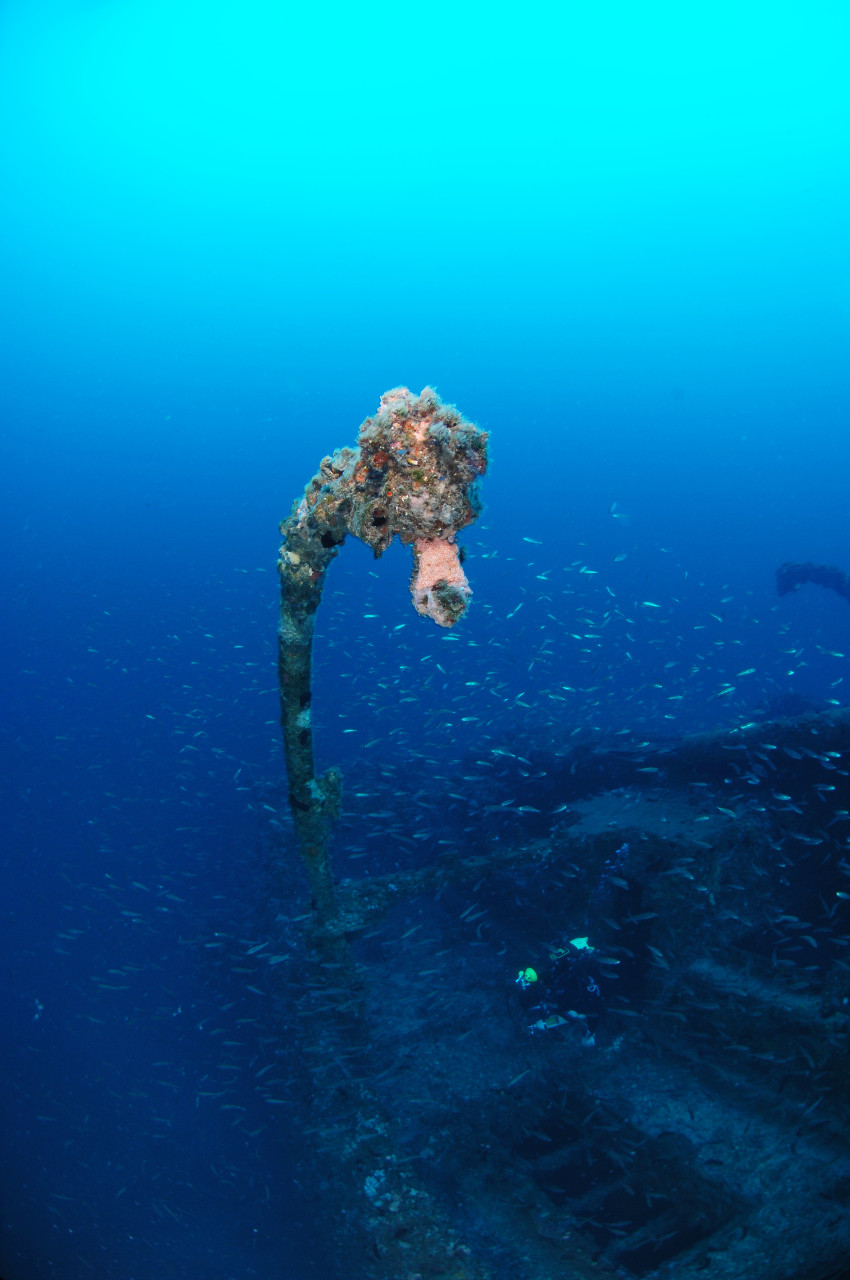
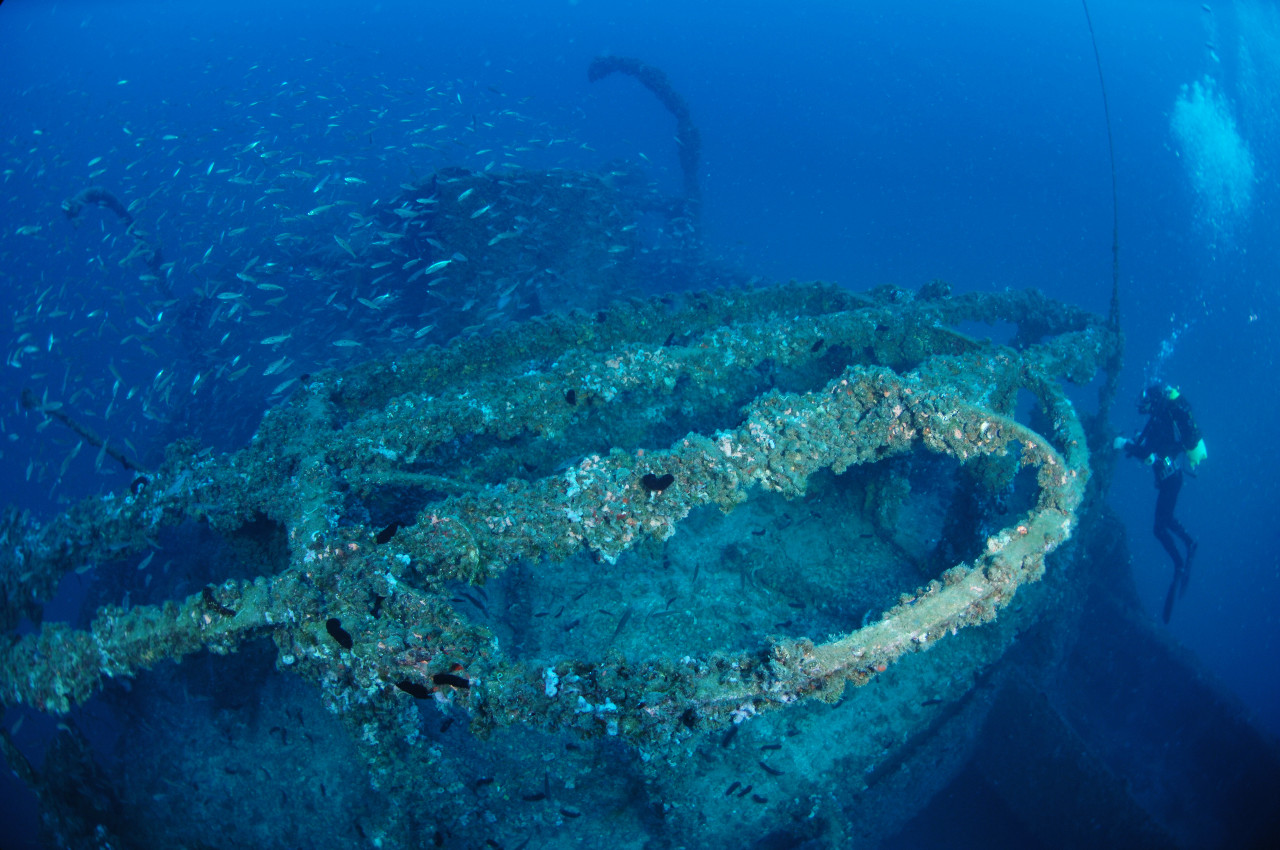

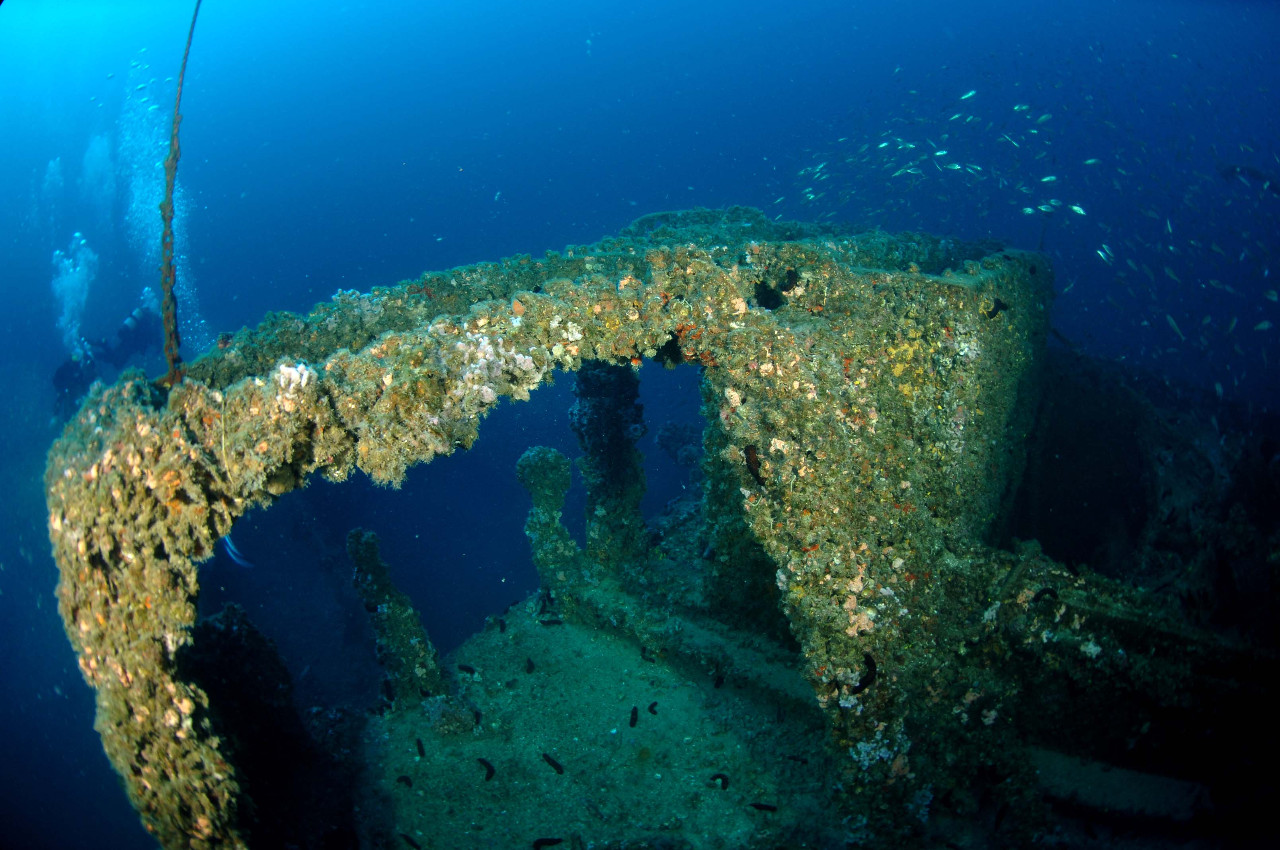
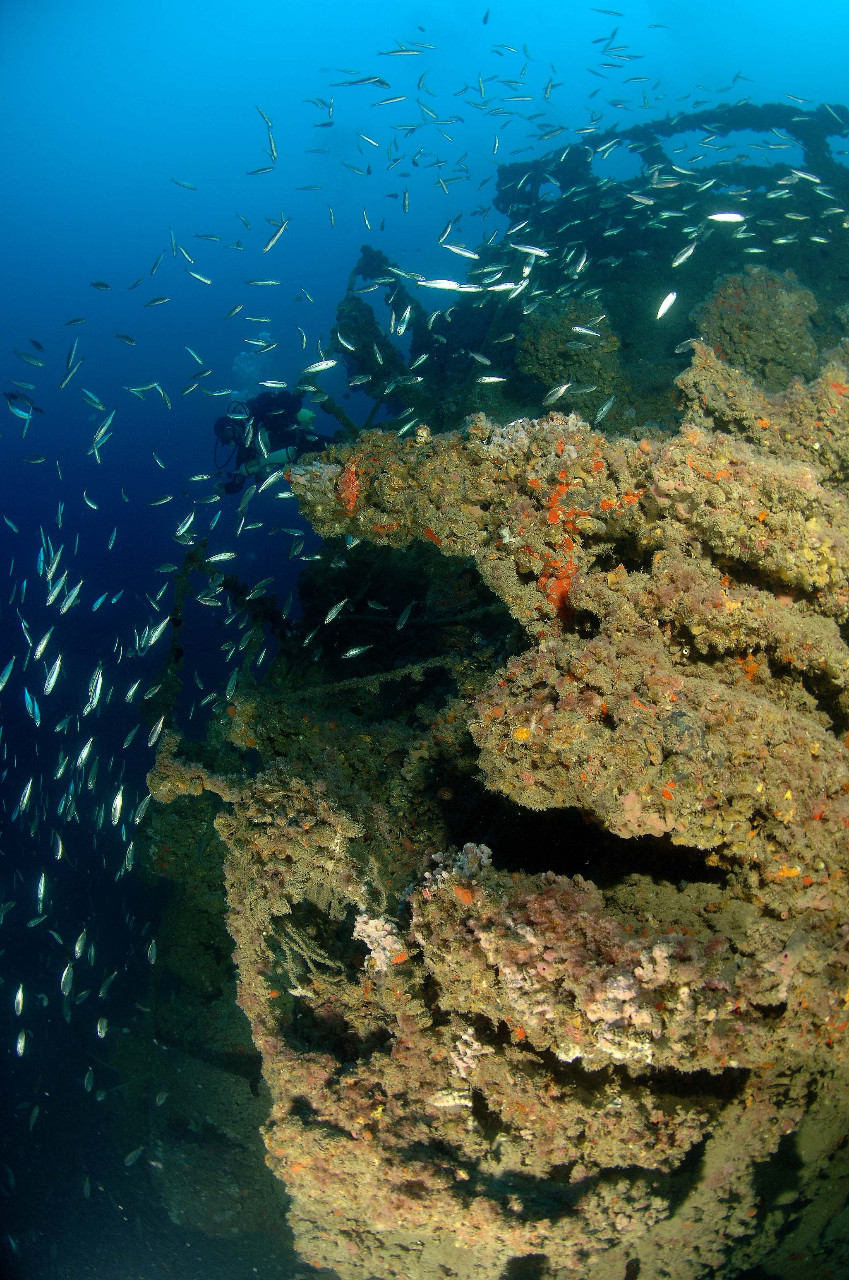
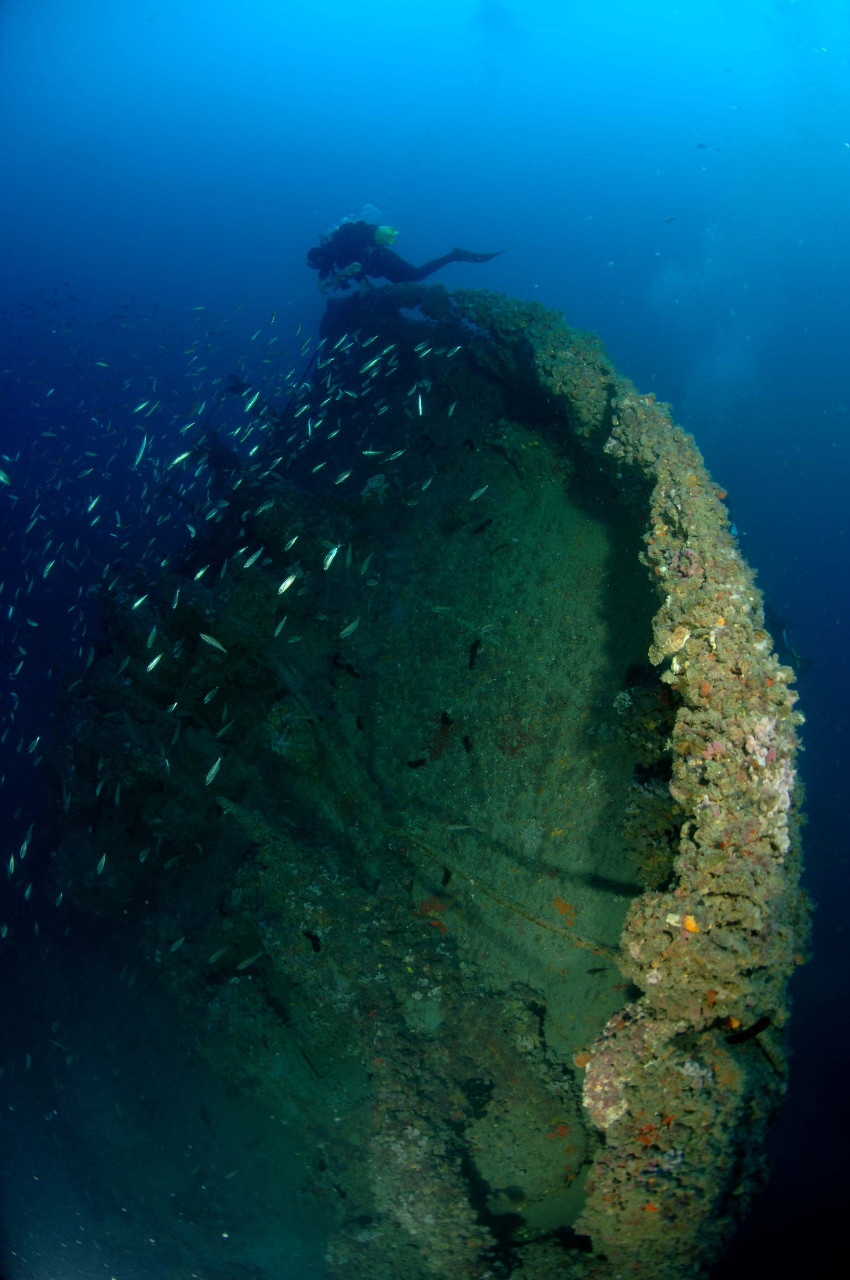
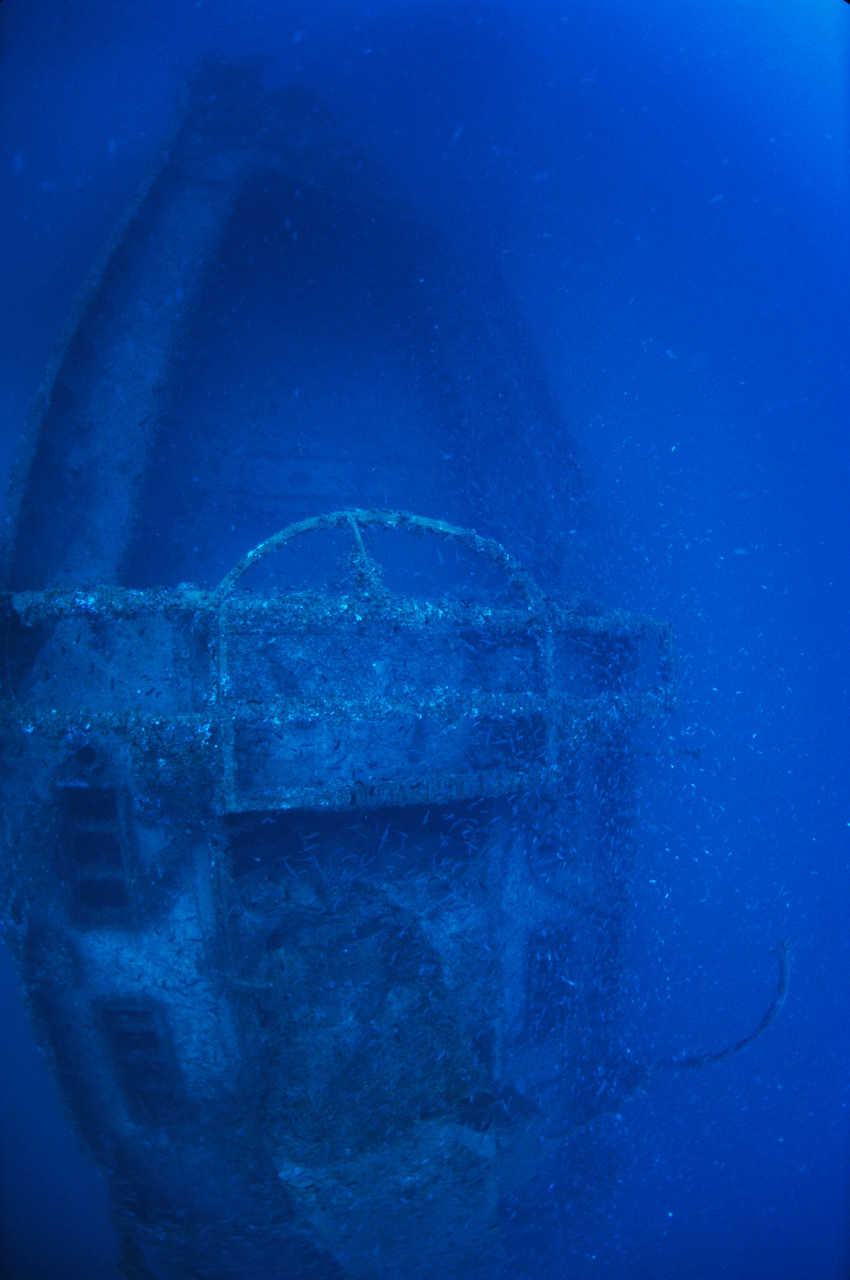
 The investment is co-financed by the Republic of Slovenia and the European Union from the European Regional Development Fund.
The investment is co-financed by the Republic of Slovenia and the European Union from the European Regional Development Fund.  H2O Globe BETA
H2O Globe BETA